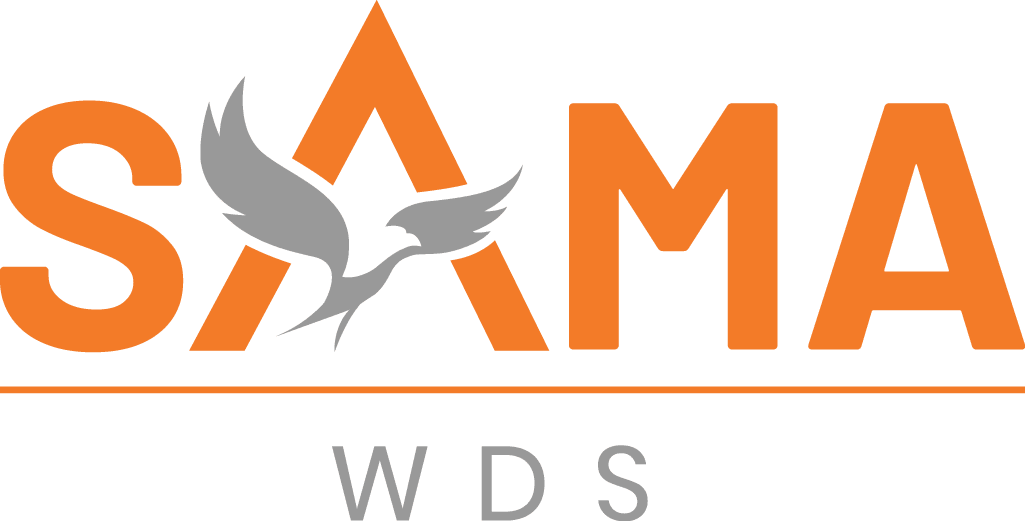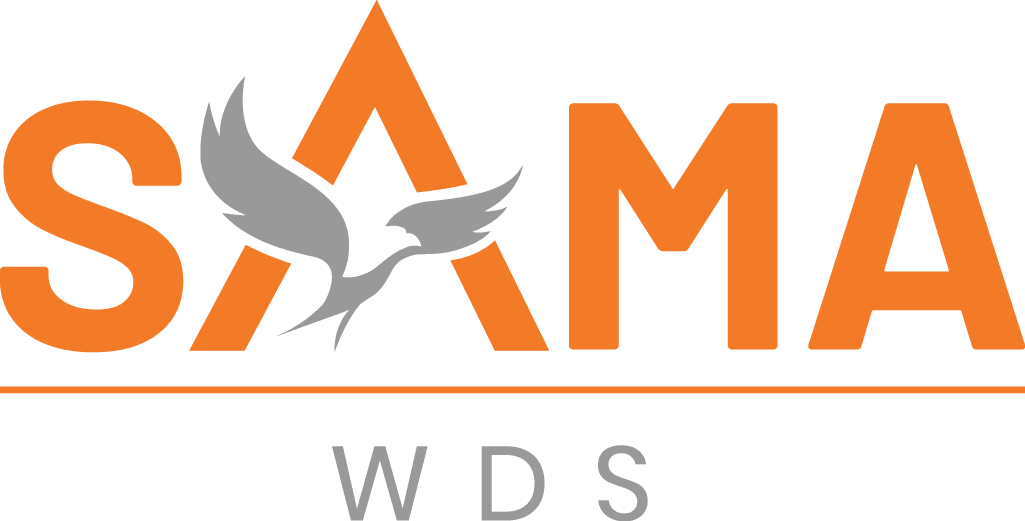
The Ultimate Guide to Workday Learning Management System: Features, Implementation, and Optimization for 2025
In an era where workforce agility and continuous upskilling define competitive advantage, the Workday Learning Management System (LMS) emerges as a pivotal component of the Workday Human Capital Management (HCM) suite. This platform integrates learning seamlessly into employee workflows, leveraging advanced technologies to deliver personalized, data-driven development experiences. As a premier Workday partner, Sama excels in providing staffing, integration, and consulting services to help organizations harness this tool effectively. For a broader view of our expertise, visit the Sama.
This comprehensive guide explores Workday LMS in depth, targeting HR professionals, IT administrators, and business leaders. We’ll dissect its technical architecture, delve into configuration intricacies, examine implementation methodologies, unpack integration frameworks, outline optimization protocols, and forecast 2025 trends. Drawing from real-world deployments and industry standards, this article synthesizes insights to empower strategic decision-making. With a focus on technical depth—such as API endpoints, security domains, and reporting schemas—we aim to provide actionable, expert-level knowledge while maintaining accessibility.
Understanding Workday Learning Management System
Workday Learning Management System is engineered as a cloud-native platform that embeds learning within the broader HCM ecosystem, facilitating real-time synchronization of employee data, skills ontologies, and performance metrics. Unlike legacy LMS solutions that operate in isolation, Workday LMS utilizes a unified data model, where learning activities directly influence talent management processes like succession planning and compensation adjustments.
At its core, the system employs Workday’s Skills Cloud, a graph-based ontology that maps over 2,000 skills to roles and learning content, enabling intelligent recommendations via machine learning algorithms. This integration eliminates data silos, ensuring that learning outcomes feed directly into HCM analytics for holistic workforce insights. Technically, this is achieved through Workday’s object-oriented architecture, where learning objects (e.g., courses, certifications) are extensible business objects with configurable attributes like prerequisites, durations, and evaluation criteria.
Key advantages include enhanced operational efficiency via automated enrollment workflows, superior data integrity through single-source-of-truth principles, and scalability for enterprises managing thousands of users across global regions. However, potential drawbacks encompass dependency on Workday’s release cycles for feature updates and the need for specialized administrators to handle complex configurations. Balancing these requires a nuanced approach, often involving phased adoption.
For illustration, consider a hypothetical manufacturing firm transitioning to Workday LMS. By mapping production skills to compliance trainings, the system automated recertifications, reducing downtime by 30% and ensuring audit-ready records— a common outcome in regulated sectors.
Expanding on the architecture, Workday LMS supports multi-tenancy, allowing organizations to segment data by business units while maintaining centralized governance. This is facilitated by tenant-specific configurations in the Workday platform, where admins can define custom fields, calculated fields, and business processes using low-code tools like Configurable Security and Business Process Framework (BPF).
Ready to optimize your Workday Learning Management System?
Sama can help you implement, integrate, and optimize Workday LMS—from personalized learning paths to advanced analytics—delivering 25% operational efficiency gains and measurable ROI.

Core Features of Workday LMS
Workday Learning Management System boasts an array of sophisticated features, each underpinned by technical mechanisms that enhance usability and efficacy. These are designed to support diverse learning modalities, from microlearning to immersive simulations, while integrating with HCM for contextual relevance.
Intuitive User Interface and Accessibility
The user interface (UI) leverages Workday’s responsive design framework, built on HTML5 and React.js components, ensuring cross-device compatibility. Dashboards are customizable via Workday Prism Analytics, allowing users to embed widgets for learning progress, upcoming deadlines, and peer recommendations. Accessibility adheres to WCAG 2.1 standards, with features like screen reader support and keyboard navigation.
Mobile accessibility extends through native apps, utilizing push notifications tied to Workday’s event-driven architecture. For instance, geolocation-based triggers can prompt location-specific trainings, configured via mobile frameworks in the admin console.
Technically, admins configure UI elements using Workday’s Experience Builder, defining layouts with drag-and-drop interfaces that generate underlying XML schemas for persistence.
Personalized Learning Paths and Content Management
Personalization is driven by AI models within Workday Skills Cloud, which use natural language processing (NLP) to analyze job descriptions, performance reviews, and user interactions. Learning paths are algorithmically generated, incorporating collaborative filtering similar to recommendation engines in e-commerce.
Content management supports SCORM 1.2/2004 and xAPI standards for interoperability. Admins can author content using built-in tools, embedding interactive elements like branching scenarios via JavaScript integrations. Blended learning configurations allow mixing synchronous (e.g., virtual instructor-led) and asynchronous formats, with scheduling handled by Workday’s calendar APIs.
Peer learning is facilitated through social features, where users upload content via secure file repositories, moderated by approval workflows in BPF. Extended Enterprise capabilities extend this to partners, with segregated security domains preventing data leakage.
Real-Time Analytics and Compliance Tracking
Analytics rely on Workday’s embedded Prism engine, supporting OLAP (Online Analytical Processing) for multidimensional queries. Prebuilt metrics include engagement scores (e.g., time spent, interaction rates) and effectiveness indicators (e.g., Kirkpatrick Level 1-4 evaluations), queried via RaaS (Report as a Service) APIs.
Compliance tracking uses automated business processes to monitor expirations, triggering notifications via email/SMS integrations. Dashboards are built with composite reports, aggregating data from learning, HCM, and external sources via connectors. Security features encompass field-level encryption (AES-256) and audit logs capturing all access events.
In a detailed case, a financial services client utilized these analytics to correlate training completions with compliance audit scores, identifying gaps through predictive modeling.
Social and Collaborative Learning Tools
Collaborative tools include discussion forums integrated with Workday’s notification hub, supporting threaded conversations and @mentions. Campaigns are configured as targeted communications, using audience criteria based on HCM attributes like job family or location.
Technically, these leverage WebSocket for real-time updates, ensuring low-latency interactions. User-generated content is stored in object repositories, with versioning and rollback capabilities.
As we’ll explore in implementation, mastering these features demands precise configuration to align with organizational needs.
Ready to optimize your Workday Learning Management System?
Sama can help you implement, integrate, and optimize Workday LMS—from personalized learning paths to advanced analytics—delivering 25% operational efficiency gains and measurable ROI.

Implementing Workday LMS: Strategies and Best Practices
Implementing Workday Learning Management System involves a methodical, iterative process grounded in agile principles, ensuring alignment with business objectives while mitigating risks like data inconsistencies or user adoption barriers.
Detailed Implementation Phases
- Discovery and Planning: Conduct workshops to elicit requirements, using tools like Workday’s Fit/Gap Analysis templates. Define key performance indicators (KPIs) such as adoption rates and map legacy data schemas to Workday objects. Establish governance with a RACI matrix for stakeholders.
- Configuration: Utilize Workday’s Setup Tenant to prototype. Configure learning catalogs by defining object hierarchies—e.g., programs containing courses with modules. Set up security groups (constrained/unconstrained) and domains to control access. Customize BPF for enrollment approvals, incorporating conditional routing based on user attributes.
- Data Migration and Integration: Employ Enterprise Interface Builder (EIB) for inbound/outbound data loads, handling transformations via XSLT mappings. Migrate content using bulk APIs, validating integrity with checksums. Address common issues like duplicate records through deduplication scripts.
- Testing: Implement a multi-tier testing strategy: unit tests in sandboxes for individual configurations, integration tests for API calls, and UAT with end-user scenarios. Use Workday’s Test Management tools to automate regression suites.
- Go-Live and Training: Execute cutover with parallel runs, monitoring via real-time dashboards. Deliver role-based training using Workday Learning itself, creating meta-courses on system usage.
Agile adoption involves sprints for feature delivery, with retrospectives to refine processes. Challenges like configuration drift are countered with version control in Workday’s change management.
In-Depth Real-World Implementation Case Study
In a project with a global logistics company, Sama orchestrated a Workday LMS rollout. Discovery revealed needs for multilingual content, leading to configurations in Workday’s localization framework. Migration involved EIB loads of 10,000+ records, with custom validations. Testing uncovered API latency issues, resolved by optimizing endpoints. Post-go-live, adoption reached 85% through gamified trainings, yielding a 25% uplift in operational efficiency. This underscores the importance of iterative testing and user-centric design.
For specialized assistance in these phases, our Workday consulting services provide end-to-end support, from planning to post-launch refinement.
Building on core features, effective implementation paves the way for robust integrations, as detailed next.
Advanced Integrations for Workday Learning
Integrations elevate Workday LMS by enabling bidirectional data flows, leveraging a suite of tools for connectivity with external ecosystems.
Integration Tools and Methods
- APIs and Web Services: Workday exposes RESTful APIs (e.g., /ccx/service/learning/v1/courses) for CRUD operations on learning objects. Authentication uses OAuth 2.0 with client credentials, supporting pagination for large datasets.
- Workday Studio and EIBs: Studio offers a graphical IDE for complex orchestrations, compiling to Java bytecode for execution. EIBs facilitate spreadsheet-based integrations, with templates for learning enrollments and completions.
- Core Connectors: Prepackaged for scenarios like Active Directory sync (user provisioning) or Salesforce integration (sales training triggers). These run on scheduled jobs, handling deltas via change detection.
- Orchestrate: A no-code platform for workflows, using drag-and-drop to chain API calls, e.g., linking HCM hires to onboarding learnings.
Common use cases include xAPI feeds from LinkedIn Learning, where completions update Workday transcripts via inbound connectors.
Security and Scalability Considerations
Security adheres to Workday’s single model, with domain policies enforcing least-privilege access. Data in transit is encrypted via TLS 1.3, and at rest with customer-managed keys. Scalability is achieved through horizontal scaling of integration runtimes, supporting burst loads up to millions of transactions daily.
Pros include reduced manual entry; cons involve debugging complex failures, addressed via logging in Studio.
To navigate these intricacies, leverage our Workday integration services, specializing in API optimizations and connector customizations.
These integrations enrich data for optimization, enhancing reporting and security as explored below.
Ready to optimize your Workday Learning Management System?
Sama can help you implement, integrate, and optimize Workday LMS—from personalized learning paths to advanced analytics—delivering 25% operational efficiency gains and measurable ROI.

Optimizing Your Workday LMS for Maximum ROI
Optimization transforms Workday LMS from a deployment to a value driver, involving continuous refinement of configurations, analytics, and security protocols.
Reporting Metrics and Dashboards
Utilize Workday’s Report Writer for custom reports, defining data sources (e.g., learning_completion_fact) and fields via XpressO expressions. Metrics encompass quantitative (e.g., completion rates = completed_enrollments / total_enrollments) and qualitative (e.g., NPS scores from surveys). Dashboards aggregate these using Prism datasets, supporting drill-downs and visualizations like heatmaps.
Step-by-step guide: 1) Create a custom report type; 2) Add calculated fields (e.g., IF(completion_date < due_date, ‘On Time’, ‘Late’)); 3) Embed in a dashboard with filters; 4) Schedule exports via EIB.
Security Features and Compliance
Implement segmented security groups, assigning permissions via intersection policies. Audit trails log events in immutable ledgers, queryable via security reports. Compliance is automated with rules engines, e.g., flagging non-compliant users via BPF conditions.
Optimization techniques include quarterly access reviews and integration with SIEM tools for anomaly detection.
Advanced Optimization Techniques
- Performance tuning: Analyze query logs to optimize indexes on learning objects.
- AI enhancements: Configure predictive models for dropout risks.
- Inter-module synergies: Link with Payroll for training-linked incentives.
In an optimization engagement for a tech enterprise, Sama refined dashboards, correlating learning data with retention metrics, achieving a 20% ROI boost.
Our Workday consulting services deliver these optimizations, ensuring sustained performance.
These practices position organizations for 2025 trends, where AI and immersive tech redefine learning.
Future Trends in Workday Learning for 2025 and Beyond
As 2025 unfolds, Workday LMS evolves with AI-infused personalization and immersive technologies, driven by Workday’s innovation roadmap.
AI will enable hyper-personalized paths, using generative models to create custom content on-the-fly, integrated via Workday’s ML APLs. VR/AR integrations, via partnerships, will simulate environments—e.g., AR overlays for field training—leveraging xAPI for tracking.
Skills ontologies will expand with blockchain-verified credentials, fostering talent mobility. Human-AI collaboration trends emphasize ethical AI, with transparent algorithms and bias audits.
Challenges include data privacy in VR scenarios, mitigated by enhanced encryption.
Sama supports these adoptions through staffing experts in AI-enhanced Workday configurations.
In conclusion, Workday Learning Management System offers a robust foundation for 2025’s dynamic workforce needs. This guide equips you to implement, integrate, and optimize effectively. To discuss tailored strategies, schedule a consultation with Sama today.
Ready to optimize your Workday Learning Management System?
Sama can help you implement, integrate, and optimize Workday LMS—from personalized learning paths to advanced analytics—delivering 25% operational efficiency gains and measurable ROI.

